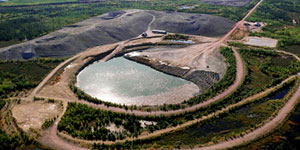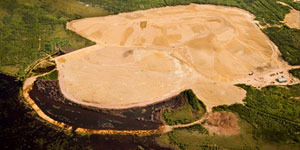Safely Returning to Nature

Normally, mining operations end when the deposit is exhausted or becomes economically unviable. The process of cleaning up a mine site, once it is no longer producing, is known as decommissioning and reclamation. All work associated with this process is closely monitored and approved by government regulators. Modern mines are designed to be decommissioned and reclaimed after the mine is no longer economical.

When a mine site is decommissioned, buildings and infrastructure on site are dismantled and all mine openings to the surface will be sealed or filled in. Whenever possible, materials are removed from the site or disposed of through modern engineering techniques that are approved by regulators.
The purpose of reclamation is to ensure the site is turned into a form that is safe and useful for nature. To reclaim remnant tailings or waste rock facilities, a specially engineered cover would be constructed to ensure the materials remain safely secured in the long term. Disturbed land areas are contoured into the local landscape and re-vegetated where possible. Structures in water, such as dams or bridges, are safely removed and the site's road access is removed and reclaimed through contouring and vegetation.

Throughout decommissioning and reclamation work, monitoring of the environment continues, with the results compared to predictions made during the environmental assessment.
The area will continue to be monitored until such time that regulators consider the area to be safe for people and the environment for the long term.






